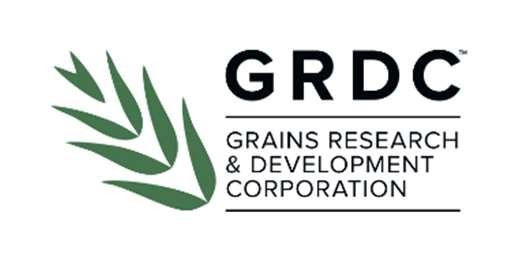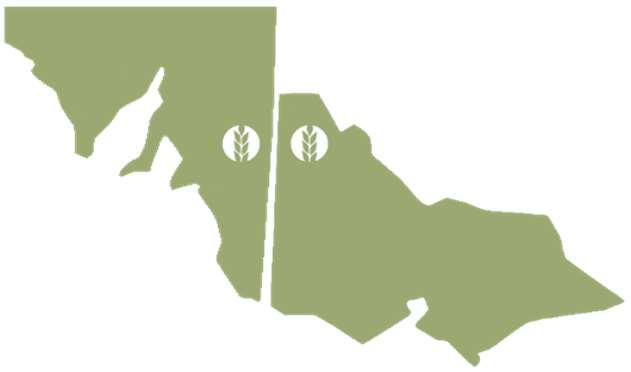
8 minute read
2021 Around the Mallee - Fixing Mallee Seeps
Farmers can now access an online guide to fixing Mallee Seeps
Authors: Chris McDonough1
Funded By: National Landcare Program, Grains Research Development Corporation, Murraylands and Riverland Landscape Board
Project Title: "A holistic approach to seep management for preventing land degradation in the landscape"
Key Messages
This project has found practical management solutions for all Mallee Seep scenarios to help halt their spread and bring areas back into production.
Targeted lucerne strips have been highly effective in reducing and drying out perched water tables within 12 months.
Puccinellia has provided excellent living cover for many scalded areas and helped restore saline scald back to healthy soil over time.
The keys to Mallee seep management lies in understanding the source of the issue, the stage of its development and the salinity level of the perched water table.
The new online Mallee Seeps Decision Tree allows farmers to find practical solutions to their own Mallee Seep situations by following simple guidelines using their own site information.
Why was the project undertaken
Mallee Seeps have become a growing farmland degradation issue across the Mallee in recent years. This has been due to the move toward more intensive farming systems where summer weed control strategies have led to reduced water use in sandy rises, resulting in the formation of localised perched water tables causing waterlogging, scalding and salt accumulation in surface layers. This has been exacerbated by periods of high out of season rainfall contributing recharge water into these catchments, as well as dry, hot periods of high evaporation and capillary rise binging more salt to surface scalds.
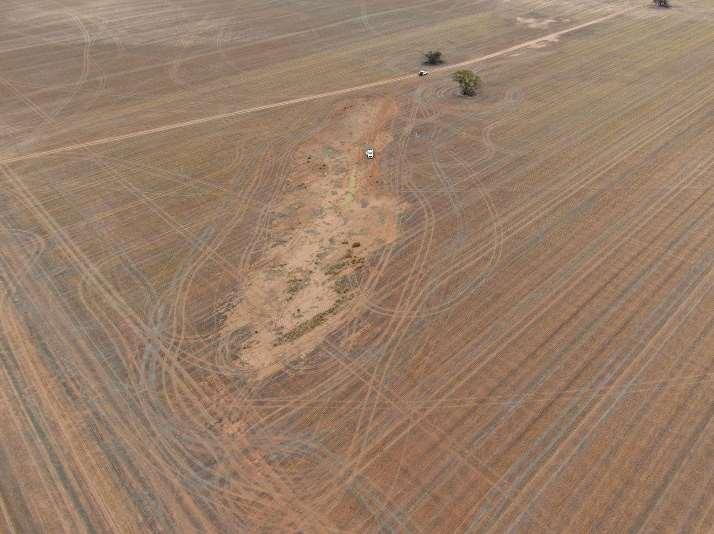
Picture: Dry Saline land in the Mallee
However, the MSF Mallee Seeps Project has shown many positive results in turning these problems around through undertaking extensive on-farm demonstrations and trials, as well as assessing the longer term impacts of former Murraylands and Riverland Landscape Board trials. These experiences, along with those of participating farmers, have now been captured in the new online Mallee Seeps Decision Tree that has recently been developed.
This interactive program shows:
how to identify mallee seeps from other saline land degradation,
how Mallee seeps form in our modern Mallee farming system,
the key factors farmers need to assess, and
clear practical strategies that farmers should take that best suit their particular situation.
There are multiple links within the decision tree to brief videos from various sites that show the practical on-farm applications, management techniques and successful results of rehabilitation in recent years.
How and where was the project undertaken
This project worked closely with farmers at least 16 farmers across all areas of the South Australian and Victorian Mallee with Mallee seeps at various stages of development and severity, within different farming systems and rainfall zones, to assess their situations and trial various ways to stop their spread and bring the land back to production. This included the strategic use of various high water use options, as well as the use of salt tolerant pastures and soil amelioration techniques using farmer scale applications to remediate these sites. There were also 2 smaller plot trial sites set up to directly measure and compare the effective water use of various strategies, as well as investigations into several remote sensing technologies, such as NDVI and deep soil imaging, to assess their practical application for Mallee Seep management.
Trials and demonstrations were set up in a variety ofways withsoil moisture monitoring equipment, piezometers, rain gauges, neutron probes, data loggers and photo points to best assess the impacts of all the treatments undertaken. Videos were made at all sites highlighting the management undertaken taken, successes of various strategies, with interviews of both farmers and project specialists included.
Conclusions and recommendations
On-farm trial and demonstration work from both the MSF Mallee Seep Projects has led to the following conclusions.
The 2 main aims of any Mallee Seep management are to:
a. Establish living cover over scalded bare areas, as this helps to restrict evaporation and capillary rise from bringing salts to concentrate at the surface, bring saline land back to health, and
b. Intercept and utilise excess water flows. If the flows of water into the discharge zone is not stopped, then any site rehabilitation will be very limited or only temporary, and therefore unlikely to prevent the spread of the Mallee Seep further into the paddock.
The 5 steps to successfully rehabilitating Mallee Seeps are as follows:
1. Make sure you are dealing with a Mallee Seep and not other saline land issues such as regional groundwater salinity, creek line salinity or dry saline land (magnesia patches), as each form has different causes and requires different management strategies.
2. Establish where the water is most likely coming from by standing at the scald or discharge zone and assessing the landscape for potential water interception zones. This can be aided by viewing satellite images (including NDVI) and digging holes to find water tables.
3. Consider what stage of development the Mallee Seep is at. Early/mild stage seeps can be addressed before they become a serious degradation issue, while intermediate/moderate and established/severe phases will require more strategic management to rehabilitate.
4. Measure the water quality. Perched water tables at the affected discharge zone usually sit within the top 2m of the surface (occasionally deeper) and can vary between fresh low levels of <8 dS/m (<5000 ppm) to a highly saline >35 dS/m (>21000ppm). Higher salinity reduces productive management options and will increase effective rehabilitation times.
5. Work out what to do. Once a farmer/advisor has made the above assessments they are encouraged to visit the online Mallee Seeps Decision Tree Mallee Seeps Decision Tree - Mallee Sustainable Farming (msfp.org.au) to work through various solutions that will best suit their particular circumstances. This includes many short videos and explanations of successful management strategies, including numerous items from this EP Mallee Seeps Project demonstration sites.
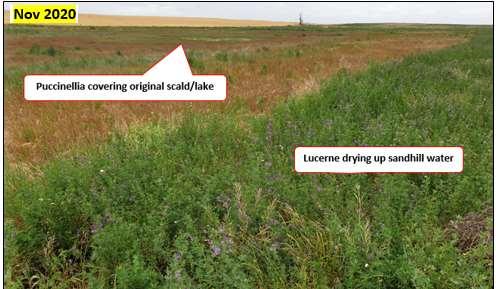
Picture: A Mallee Seep Rehabilitated
Next step
Mallee Seeps will continue to develop and grow, particularly after periods of high unseasonal rainfall. Early recognition and action is vital to prevent early saturated areas or small bare patches from becoming large bare scalds that are both unproductive and a hazard to farm machinery. Farmers should investigate any areas at the base of sandy rises that are initially showing unusually high levels of crop growth or staying green for longer going into harvest. It is not uncommon to dig and find a perched water table within 1.5m.
The keys to successfully managing Mallee Seeps lie in understanding both the salinity level of the perched water tables (which can range from very fresh, to saltier than seawater) as well as the stage of seep development. While early identification and strategic action is vital in reducing impacts, even well-established seep scalds have been brought back into production.
Where water tables are found to be less saline, targeted strips of lucerne close to the discharge areas can quickly reduce and even dry them out. In highly saline sites, salt tolerant trees may be the best option for lowering water tables, or the lucerne may need to be targeted higher up the slope to intercept fresher recharge water.
Once stemming the flow of water into a recently developing area has been set up, then it may be possible to bring sand and straw over smaller saline patches and then continue to crop over them. However, in situations where moderate to severe saline scaling has already formed, then establishing and maintaining living cover over affected areas with salt tolerant grasses such as Puccinellia becomes a priority. Where this has occurred, tests have shown a reversal of surface soil salinisation after about 12 months of good establishment.
Sites where both the flow of water into seep areas has been contained, and living soil cover re-established over affected areas, have always shown a reduction in land degradation and restoration of soil back to productivity. At some sites, this has even led to a return to crop production.
While achieving these outcomes can be difficult depending on circumstances, this new Online guide shows practical solutions and examples where seep impacts have been halted, reversed, covered, and revitalised. Farmers and advisors are encouraged to visit this program at https://msfp.org.au/mallee-seeps-decision-tree/ or through the MSF Website.
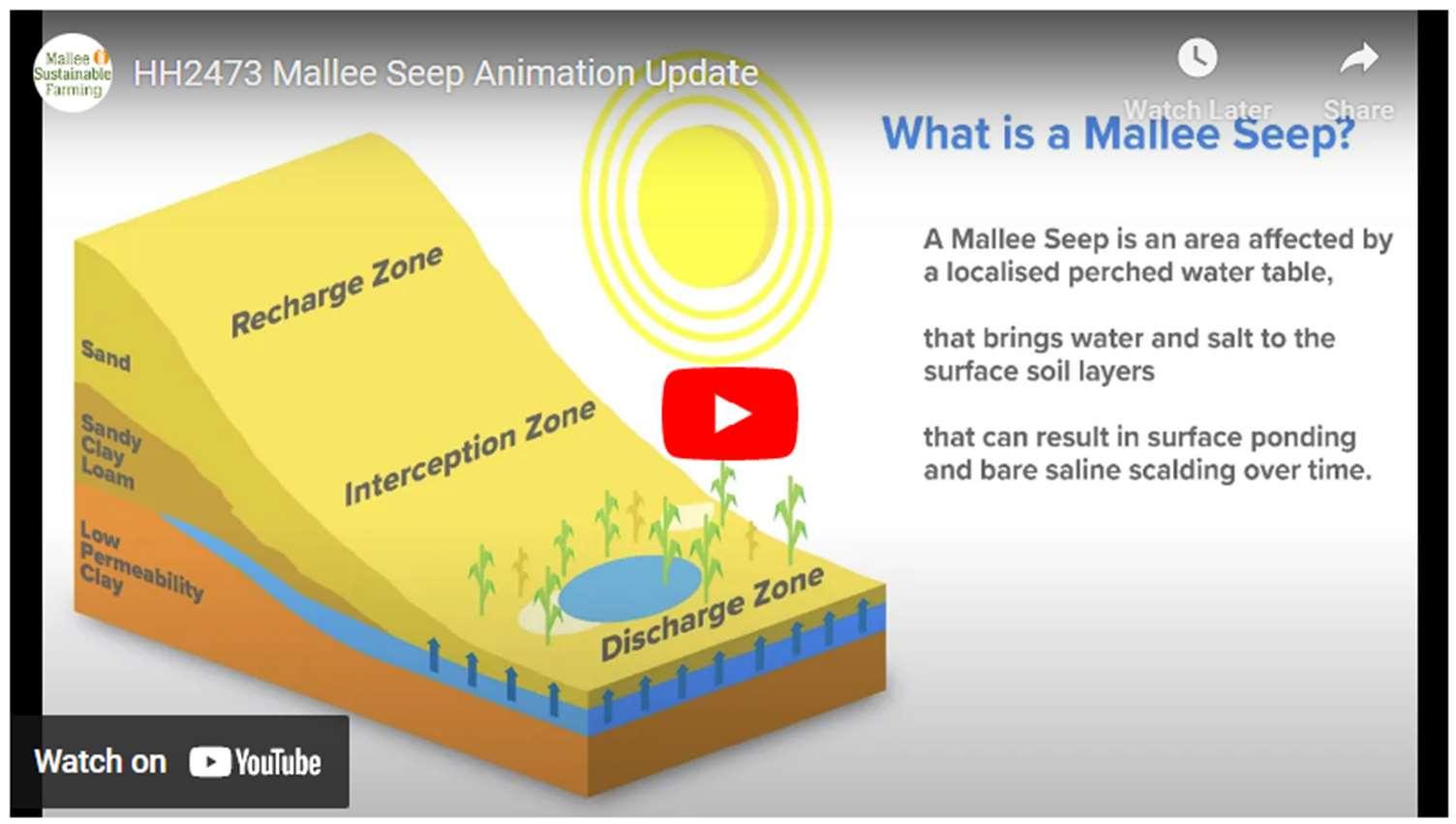
Picture: Mallee Seeps decision tree on MSF website
Acknowledgements
This project is supported by Mallee Sustainable Farming with funding from the Australian Government’s National Landcare Program, the GRDC and the Murraylands and Riverland Landscape Board.
Project Partners include Mallee Sustainable Farming, Frontier Farming Systems, Insight Extension for Agriculture, Agrivision Consultants, CSIRO, Coorong Tatiara LAP, University of Adelaide.
